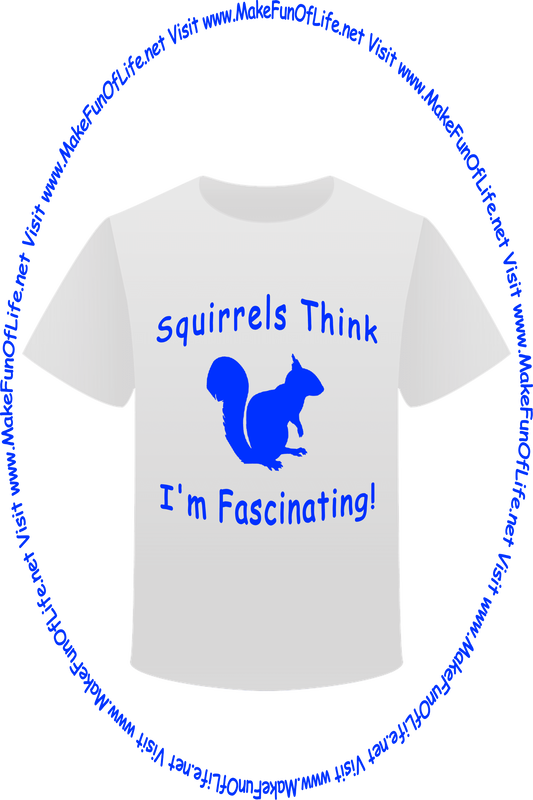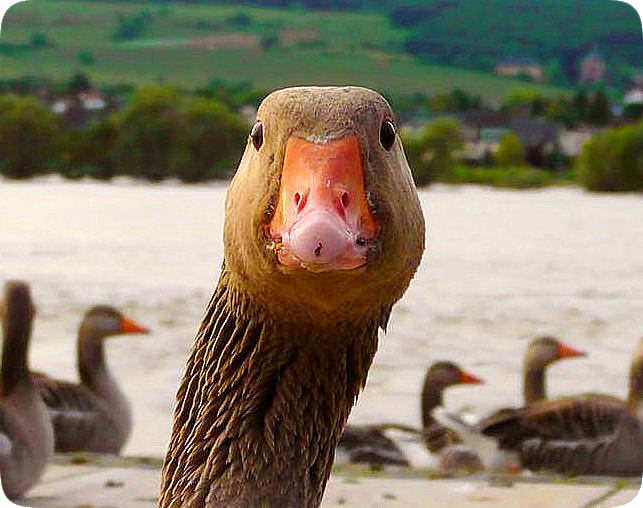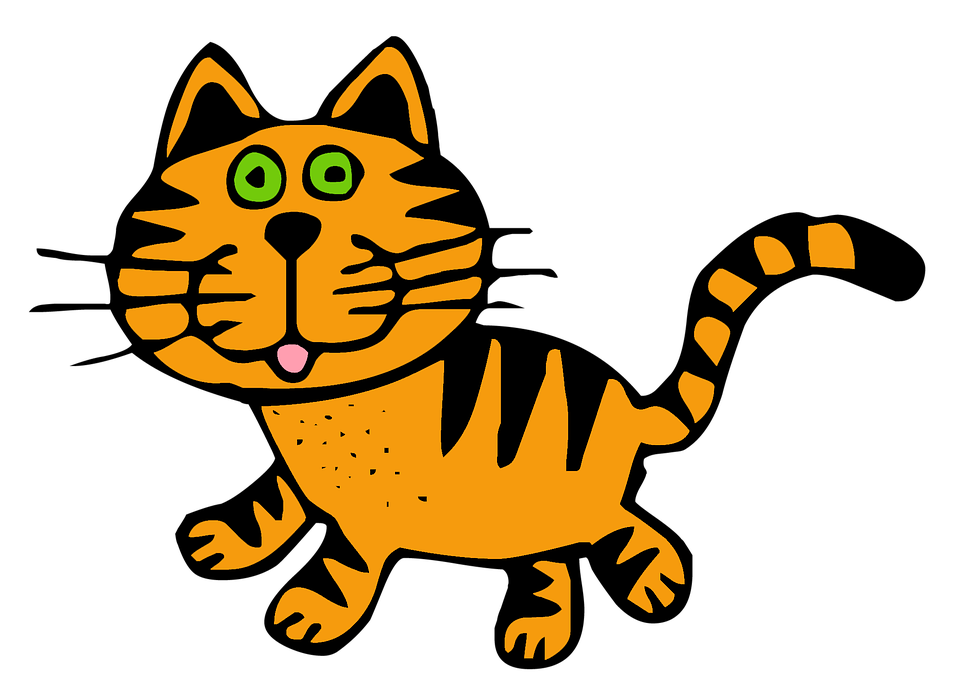Andrew: Why could the dinosaur not cross the road?
Andy: Because there were no roads back then.
Chance: How can you tell a dinosaur from spaghetti?
Chaucer: A dinosaur will not slip off your fork.
The word ‘dinosaur’ was coined in 1842 by biologist Richard Owen, who combined the Greek words ‘deinos’ meaning ‘terrible’ and ‘sauros’ meaning ‘lizard.’ Mr. Owen meant ‘terrible lizard’ in reference to the size of the creatures, rather than to any fearsomeness. While dinosaurs are not lizards, both dinosaurs and lizards are members of the group of animals known as reptiles, so dinosaurs are reptiles.
Millie: What do you get if you give a dinosaur a pogo stick to play with?
Millicent: Big holes all over your driveway.
Grant: I lost my pet dinosaur.
Hugh: Have you put an ad in the newspaper?
Grant: What good would that do - she can’t read!
Rusty: What has a spiked tail, plates on its back, and sixteen wheels?
Russell: A stegosaurus on roller-skates.
Winston: Why are tall dinosaurs good at forecasting the weather?
Winifred: Because they are the first to know when it rains.
Some dinosaurs may have had colorful skin, but scientists do not know for sure. It is likely that most dinosaurs had green and brown scales to help them hide among trees and plants. Some dinosaurs had feathers, but were flightless.
Chuck: Why could the long-necked dinosaur not see where it was going?
Charles: Because it had its head in the clouds.
Teri: When does a big fearsome dinosaur look like a cute little clown?
Theresa: When it wears a cute little clown suit.
Dinosaurs Facts
- An adult male dinosaur is called a bull.
- An adult female dinosaur is called a cow.
- Young dinosaurs are called juveniles.
- A group of plant-eating dinosaurs is called a herd.
- A group of meat-eating dinosaurs is called a pack.
- Dinosaurs lived on all of the continents, including Antarctica.
- Dinosaurs lived to be about 75 to 300 years of age.
Buster: What do you call a dinosaur hitchhiker?
Mack: A ten-and-a-half-ton pickup.
Buddy: How do you run over a dinosaur?
Holly: Climb up its foreleg, dash along its back, and slide down its tail.
Some dinosaurs had tails that were more than 45 feet long. Long tails helped them to keep their balance while running.
Ellen: What do you have when dinosaurs crash their cars?
Allen: Tyrannosaurus wrecks.
Tammy: How do you ask a dinosaur to lunch?
Sammy: Say, “Tea, Rex?”
Dinosaurs often swallowed large rocks. These rocks stayed in their stomachs and helped them grind up food.
Molly: How do dinosaurs pay their bills?
Polly: With Tyrannosaurus checks.
Trudy: Do you know what the difference is between a piece of candy and a dinosaur bone?
Rudy: No.
Trudy: Good, then enjoy this dinosaur bone.
When some humans first found dinosaur bones, they guessed that the bones must be from dragons or giants, which is how the myths, or fanciful stories, associated with these two types of imaginary creatures began. Additionally, hoaxers and practical jokers would put together the bones from different animals and humans to make fantastical creatures that never existed. So, to create a giant, they would take the very long leg bones from a dinosaur and put them in place of the regular-length leg bones in a human skeleton, and add in some bones from other animals. Next, they would make up a story to go along with it, perhaps about an entire race of giants living in a faraway land across the sea, in some remote mountains, forests, or swamps. Then they would put up a sign offering to allow people to see the ‘giant skeleton’ and regale them with made-up stories about it, for a modest sum of money. The more bones they could dig up from different animals, the better, because they could put them together in all sorts of ways to create all kinds of creatures that do not exist in nature, as for example, flying monkeys or mermaids. However, unlike pretend, mythical, or hoax animals, dinosaurs were once real, living creatures.
Rachael: How long should a dinosaur’s legs be?
Michael: Long enough to reach the ground.
George: What do you get if you cross a dinosaur with a skunk?
Martha: The biggest stinker you ever saw.
Just as birds and reptiles do now, dinosaurs laid eggs from which baby dinosaurs hatched. Some dinosaurs built nests for their eggs and even fed and protected their babies when they hatched. The largest dinosaur eggs were as large as basketballs. However, the bigger the egg, the thicker the shell, so that if the eggs had been any larger, dinosaur babies possibly would not have been able to break out of the shells.
Priscilla: What kind of materials do dinosaurs put on the floors of their houses?
Della: Rep tiles.
Megan: How can you tell if a dinosaur is an herbivore or a carnivore?
Melvin: Lie down on a plate.
Most meat-eating dinosaurs had bones filled with air. Though their bones were huge, they were not as heavy as they looked. Birds have the same kind of hollow bones.
Matthew: What would you get if you crossed a hungry dinosaur and a herd of 100 cattle?
Matilda: A dinosaur that is no longer hungry.
While dinosaurs are often thought of as having been huge beasts, many dinosaurs were smaller than modern humans. Scientists believe that larger dinosaurs, with their larger bones, were more likely to be preserved as fossils, while smaller dinosaurs, with their smaller bones, were more likely to be destroyed through natural processes, such as being washed away by rain, broken up and dissolved into the surrounding soil, or carried away and broken into pieces by animals that like to chew on bones.
Angie: Which dinosaur had the biggest vocabulary?
Angelica: Was it the thesaurus?
Dinosaurs lived during a period of Earth’s history called the Mesozoic Era, meaning ‘middle life’ and also referred to as the ‘Age of the Dinosaurs,’ which stretched from the Triassic period 230 million years ago, through the Jurassic period, and up until the end of the Cretaceous period about 65 million years ago, when a mass extinction occurred. Dinosaurs existed for about 165 million years. By comparison, humans have been around for only 2 million years, and modern humans just 130,000 years.
Overheard: When I grow up, I want to be a dinosaur!
Vera: Name the three time periods of the dinosaurs.
Ollie: Triassic, Jurassic, and Cretaceous.
Bob: How did you break your foot?
Fred: Did you see the Stegosaurus walk past?
Bob: Yes.
Fred: Well . . . I did not!
The largest dinosaurs, such as the Brachiosaurus and Apatosaurus and Triceratops, were herbivores, or animals that eat plants. Plant-eating dinosaurs had eyes looking out to each side of their heads, so they could watch for danger while they ate. To help them fight off carnivores including the Allosaurus and the Spinosaurus and the Tyrannosaurus Rex, many herbivores had natural defenses, such as the spikes on the tail of the Stegosaurus and the three horns attached to the front of the Triceratops’s bony-plate head shield.
Dinah: What kind of dinosaur lives in your cell phone?
Dino: A tyrannosaurus text.
Herbivorous dinosaurs tended to have blunt, meaning not sharp, hooves or toenails. Most plant eaters walked on four feet to carry their heavy bodies better. Some plant eaters could balance on their two back feet for a short time, enabling them to reach the tender shoots of the new growth at the tops of tall plants.
Merry: Where do dinosaurs put bandages?
Mary: On their Dino-sores.
Meat-eating, or carnivorous, dinosaurs are known as theropods, which means ‘beast-footed,’ because they had sharp, hooked claws on their toes. Most meat eaters walked on two feet. This made them faster and left their ‘hands’ free to grab their prey.
Chester: Why did carnivorous dinosaurs eat raw meat and herbivorous dinosaurs eat raw plants?
Lester: Because they did not know how to cook.
Leonard: What do you get when you cross a dinosaur with a lemon?
Lenny: A dino-sour. (If your answer was a sour-saurus, that would also be correct).
Tyrannosaurus Rexes (Kings of the Dinosaurs) lived about sixty-five million years ago in what is now western North America. T-Rexes were the largest carnivores (meat-eaters) in their habitat, often measuring 13 meters (43 feet) in length and 4 meters (13 feet) in height. The biggest Rex tooth found is about 30 centimeters (12 inches) long. Yet Tyrannosaurus Rexes had more than 98 percent of their DNA in common with modern barnyard chickens, so even with their reputation for being fierce predators, they were really just big chickens.
Chet: What do you call one hundred dancing dinosaurs?
Chip: An earthquake?
Plant-eating dinosaurs often lived together for protection, as herding animals today do. The herds ranged from just a few adults and their young to thousands of animals.
Christopher: What is in the middle of a herd of dinosaurs?
Christine: The letter ‘s.’
Cal: What do you get if you tell a joke about a 26-ton dinosaur?
Kel: Big laughs?
Cal: Right! What do you get if you tell a joke about a 78-ton dinosaur?
Kel: Bigger laughs?
Cal: Right! And what do you get if you tell a joke about a 248-ton dinosaur?
Kel: Even bigger laughs?
Cal: Nope! They don’t come in that size.
Tim: Why did the dinosaurs go extinct?
Mat: Because they would not take baths!
Evidence suggests that a massive meteorite (space rock) hit the Yucatan Peninsula in Mexico 65 million years ago. The resulting crater was 180 kilometers (112 miles) wide and was caused by an object 9.7 kilometers (6 miles) in diameter. It would have hit Earth’s crust with immense force, sending shockwaves around the world. Large amounts of debris would have been sent flying up into the air, which would have blocked out sunlight and significantly changed the Earth’s temperature and atmosphere. Earth tremors caused by the impact would have displaced large amount of water, causing widespread flooding. All large land animals that were out in the open would have died, including dinosaurs on land and large sea creatures swimming just beneath the water’s surface. Only small animals that could take shelter in burrows in the ground, caves, rock crevices, and deep underwater, would have lived. Some birds, crocodiles, fishes, insects, lizards, snakes, spiders, and turtles would have survived. They would have been witness to perhaps the most horrific event in the history of life on Earth.
══════════════════════════════════════════════════
l i v e ☆ l a u g h ツ l o v e ♥ g r o w ☼ l i v e ☆ l a u g h ツ l o v e ♥ g r o w ☼
══════════════════════════════════════════════════
Great Big Dinosaurs
Great big dinosaurs
Lived long ago.
They roamed the Earth in search of food,
But now they’re gone, you know.
Great big dinosaurs,
Some could even fly.
But there are no dinosaurs,
I often wonder why.
by Angela Wolfe
══════════════════════════════════════════════════
l i v e ☆ l a u g h ツ l o v e ♥ g r o w ☼ l i v e ☆ l a u g h ツ l o v e ♥ g r o w ☼
══════════════════════════════════════════════════
Victoria: Why was the dinosaur afraid to go back to the library?
Vicky: Her books were sixty million years overdue.
Brontosaurus
The giant brontosaurus
Was a prehistoric chap
With four fat feet to stand on
And a very skimpy lap.
The scientists assure us
Of a most amazing thing -
A brontosaurus blossomed
When he had a chance to sing!
(The bigger brontosauruses,
Who like to sing in choruses,
Would close their eyes and harmonize
And sing most anything.)
The growled and they yowled,
They deedled and they dummed;
They warbled and they whistled,
They howled and they hummed.
They didn’t eat, they didn’t sleep;
They sang and sang all day.
Now all you’ll find are footprints
Where they tapped the time away!
by Gail Kredenser (Gail Kredenser Mack)
Harrold: What do you call a dinosaur that never gives up?
Harry: A Try-try-try-ceratops!
Rick: What do you say when you want your dinosaur to move faster?
Richard: “Pronto, saurus!”
Can humans outrun dinosaurs? Humans have a top average speed over short distances of just slightly more than 32 kilometers (20 miles) an hour. The fastest dinosaur, the Ornithomimus, is estimated to have been able to run up to 64 kilometers (40 miles) an hour. However, the big cats called cheetahs are the fasted known animals ever to exist on Earth, capable of accelerating from 0 to 70 kilometers (0 to 43.5 miles) an hour in 3 seconds. If you ever see a human professional athlete, an average dinosaur, and a typical cheetah on a racetrack running a race, both the dinosaur and the cheetah might look back at the human and holler, “Try to keep up, slow-poke!”
Jake: What do you call a tyrannosaurus that talks and talks and talks?
Jacob: A dino-bore!
Eric: If three dinosaurs are a crowd, what are four and five?
Erica: Nine.
Despite being long extinct, dinosaurs are frequently featured in entertainment. One example of this is Michael Crichton’s 1990 book “Jurassic Park.” Made into a movie in 1993, the story features cloned dinosaurs brought to life with the help of DNA (genetic material) found in mosquitoes that had been trapped in amber.
Jessie: Which dinosaurs were the best policemen?
Jessica: Tricera-cops!
Patrick: What did the Tyrannosaurus Rex do after lifting weights at the gym?
Patricia: I am sure it rested because it was probably very dino-sore!
Many scientists believe that dinosaurs are extinct, meaning that no living dinosaurs exist today. However, some scientists believe that birds are descended from theropod dinosaurs, and therefore, dinosaurs are not really extinct. As an unknown author said, “Dinosaurs aren’t extinct. They’ve just learned to hide in the trees.” Just maybe . . . birds could be . . . dinosaurs.
Herman: What makes more noise than a dinosaur?
Sherman: Ten dinosaurs!
Thud, thud, thud, thud . . . do you hear those huge dinosaurs coming this way? They will be expecting us to tell them some jokes - do you know any? If not, just continue reading . . .
Andy: Because there were no roads back then.
Chance: How can you tell a dinosaur from spaghetti?
Chaucer: A dinosaur will not slip off your fork.
The word ‘dinosaur’ was coined in 1842 by biologist Richard Owen, who combined the Greek words ‘deinos’ meaning ‘terrible’ and ‘sauros’ meaning ‘lizard.’ Mr. Owen meant ‘terrible lizard’ in reference to the size of the creatures, rather than to any fearsomeness. While dinosaurs are not lizards, both dinosaurs and lizards are members of the group of animals known as reptiles, so dinosaurs are reptiles.
Millie: What do you get if you give a dinosaur a pogo stick to play with?
Millicent: Big holes all over your driveway.
Grant: I lost my pet dinosaur.
Hugh: Have you put an ad in the newspaper?
Grant: What good would that do - she can’t read!
Rusty: What has a spiked tail, plates on its back, and sixteen wheels?
Russell: A stegosaurus on roller-skates.
Winston: Why are tall dinosaurs good at forecasting the weather?
Winifred: Because they are the first to know when it rains.
Some dinosaurs may have had colorful skin, but scientists do not know for sure. It is likely that most dinosaurs had green and brown scales to help them hide among trees and plants. Some dinosaurs had feathers, but were flightless.
Chuck: Why could the long-necked dinosaur not see where it was going?
Charles: Because it had its head in the clouds.
Teri: When does a big fearsome dinosaur look like a cute little clown?
Theresa: When it wears a cute little clown suit.
Dinosaurs Facts
- An adult male dinosaur is called a bull.
- An adult female dinosaur is called a cow.
- Young dinosaurs are called juveniles.
- A group of plant-eating dinosaurs is called a herd.
- A group of meat-eating dinosaurs is called a pack.
- Dinosaurs lived on all of the continents, including Antarctica.
- Dinosaurs lived to be about 75 to 300 years of age.
Buster: What do you call a dinosaur hitchhiker?
Mack: A ten-and-a-half-ton pickup.
Buddy: How do you run over a dinosaur?
Holly: Climb up its foreleg, dash along its back, and slide down its tail.
Some dinosaurs had tails that were more than 45 feet long. Long tails helped them to keep their balance while running.
Ellen: What do you have when dinosaurs crash their cars?
Allen: Tyrannosaurus wrecks.
Tammy: How do you ask a dinosaur to lunch?
Sammy: Say, “Tea, Rex?”
Dinosaurs often swallowed large rocks. These rocks stayed in their stomachs and helped them grind up food.
Molly: How do dinosaurs pay their bills?
Polly: With Tyrannosaurus checks.
Trudy: Do you know what the difference is between a piece of candy and a dinosaur bone?
Rudy: No.
Trudy: Good, then enjoy this dinosaur bone.
When some humans first found dinosaur bones, they guessed that the bones must be from dragons or giants, which is how the myths, or fanciful stories, associated with these two types of imaginary creatures began. Additionally, hoaxers and practical jokers would put together the bones from different animals and humans to make fantastical creatures that never existed. So, to create a giant, they would take the very long leg bones from a dinosaur and put them in place of the regular-length leg bones in a human skeleton, and add in some bones from other animals. Next, they would make up a story to go along with it, perhaps about an entire race of giants living in a faraway land across the sea, in some remote mountains, forests, or swamps. Then they would put up a sign offering to allow people to see the ‘giant skeleton’ and regale them with made-up stories about it, for a modest sum of money. The more bones they could dig up from different animals, the better, because they could put them together in all sorts of ways to create all kinds of creatures that do not exist in nature, as for example, flying monkeys or mermaids. However, unlike pretend, mythical, or hoax animals, dinosaurs were once real, living creatures.
Rachael: How long should a dinosaur’s legs be?
Michael: Long enough to reach the ground.
George: What do you get if you cross a dinosaur with a skunk?
Martha: The biggest stinker you ever saw.
Just as birds and reptiles do now, dinosaurs laid eggs from which baby dinosaurs hatched. Some dinosaurs built nests for their eggs and even fed and protected their babies when they hatched. The largest dinosaur eggs were as large as basketballs. However, the bigger the egg, the thicker the shell, so that if the eggs had been any larger, dinosaur babies possibly would not have been able to break out of the shells.
Priscilla: What kind of materials do dinosaurs put on the floors of their houses?
Della: Rep tiles.
Megan: How can you tell if a dinosaur is an herbivore or a carnivore?
Melvin: Lie down on a plate.
Most meat-eating dinosaurs had bones filled with air. Though their bones were huge, they were not as heavy as they looked. Birds have the same kind of hollow bones.
Matthew: What would you get if you crossed a hungry dinosaur and a herd of 100 cattle?
Matilda: A dinosaur that is no longer hungry.
While dinosaurs are often thought of as having been huge beasts, many dinosaurs were smaller than modern humans. Scientists believe that larger dinosaurs, with their larger bones, were more likely to be preserved as fossils, while smaller dinosaurs, with their smaller bones, were more likely to be destroyed through natural processes, such as being washed away by rain, broken up and dissolved into the surrounding soil, or carried away and broken into pieces by animals that like to chew on bones.
Angie: Which dinosaur had the biggest vocabulary?
Angelica: Was it the thesaurus?
Dinosaurs lived during a period of Earth’s history called the Mesozoic Era, meaning ‘middle life’ and also referred to as the ‘Age of the Dinosaurs,’ which stretched from the Triassic period 230 million years ago, through the Jurassic period, and up until the end of the Cretaceous period about 65 million years ago, when a mass extinction occurred. Dinosaurs existed for about 165 million years. By comparison, humans have been around for only 2 million years, and modern humans just 130,000 years.
Overheard: When I grow up, I want to be a dinosaur!
Vera: Name the three time periods of the dinosaurs.
Ollie: Triassic, Jurassic, and Cretaceous.
Bob: How did you break your foot?
Fred: Did you see the Stegosaurus walk past?
Bob: Yes.
Fred: Well . . . I did not!
The largest dinosaurs, such as the Brachiosaurus and Apatosaurus and Triceratops, were herbivores, or animals that eat plants. Plant-eating dinosaurs had eyes looking out to each side of their heads, so they could watch for danger while they ate. To help them fight off carnivores including the Allosaurus and the Spinosaurus and the Tyrannosaurus Rex, many herbivores had natural defenses, such as the spikes on the tail of the Stegosaurus and the three horns attached to the front of the Triceratops’s bony-plate head shield.
Dinah: What kind of dinosaur lives in your cell phone?
Dino: A tyrannosaurus text.
Herbivorous dinosaurs tended to have blunt, meaning not sharp, hooves or toenails. Most plant eaters walked on four feet to carry their heavy bodies better. Some plant eaters could balance on their two back feet for a short time, enabling them to reach the tender shoots of the new growth at the tops of tall plants.
Merry: Where do dinosaurs put bandages?
Mary: On their Dino-sores.
Meat-eating, or carnivorous, dinosaurs are known as theropods, which means ‘beast-footed,’ because they had sharp, hooked claws on their toes. Most meat eaters walked on two feet. This made them faster and left their ‘hands’ free to grab their prey.
Chester: Why did carnivorous dinosaurs eat raw meat and herbivorous dinosaurs eat raw plants?
Lester: Because they did not know how to cook.
Leonard: What do you get when you cross a dinosaur with a lemon?
Lenny: A dino-sour. (If your answer was a sour-saurus, that would also be correct).
Tyrannosaurus Rexes (Kings of the Dinosaurs) lived about sixty-five million years ago in what is now western North America. T-Rexes were the largest carnivores (meat-eaters) in their habitat, often measuring 13 meters (43 feet) in length and 4 meters (13 feet) in height. The biggest Rex tooth found is about 30 centimeters (12 inches) long. Yet Tyrannosaurus Rexes had more than 98 percent of their DNA in common with modern barnyard chickens, so even with their reputation for being fierce predators, they were really just big chickens.
Chet: What do you call one hundred dancing dinosaurs?
Chip: An earthquake?
Plant-eating dinosaurs often lived together for protection, as herding animals today do. The herds ranged from just a few adults and their young to thousands of animals.
Christopher: What is in the middle of a herd of dinosaurs?
Christine: The letter ‘s.’
Cal: What do you get if you tell a joke about a 26-ton dinosaur?
Kel: Big laughs?
Cal: Right! What do you get if you tell a joke about a 78-ton dinosaur?
Kel: Bigger laughs?
Cal: Right! And what do you get if you tell a joke about a 248-ton dinosaur?
Kel: Even bigger laughs?
Cal: Nope! They don’t come in that size.
Tim: Why did the dinosaurs go extinct?
Mat: Because they would not take baths!
Evidence suggests that a massive meteorite (space rock) hit the Yucatan Peninsula in Mexico 65 million years ago. The resulting crater was 180 kilometers (112 miles) wide and was caused by an object 9.7 kilometers (6 miles) in diameter. It would have hit Earth’s crust with immense force, sending shockwaves around the world. Large amounts of debris would have been sent flying up into the air, which would have blocked out sunlight and significantly changed the Earth’s temperature and atmosphere. Earth tremors caused by the impact would have displaced large amount of water, causing widespread flooding. All large land animals that were out in the open would have died, including dinosaurs on land and large sea creatures swimming just beneath the water’s surface. Only small animals that could take shelter in burrows in the ground, caves, rock crevices, and deep underwater, would have lived. Some birds, crocodiles, fishes, insects, lizards, snakes, spiders, and turtles would have survived. They would have been witness to perhaps the most horrific event in the history of life on Earth.
══════════════════════════════════════════════════
l i v e ☆ l a u g h ツ l o v e ♥ g r o w ☼ l i v e ☆ l a u g h ツ l o v e ♥ g r o w ☼
══════════════════════════════════════════════════
Great Big Dinosaurs
Great big dinosaurs
Lived long ago.
They roamed the Earth in search of food,
But now they’re gone, you know.
Great big dinosaurs,
Some could even fly.
But there are no dinosaurs,
I often wonder why.
by Angela Wolfe
══════════════════════════════════════════════════
l i v e ☆ l a u g h ツ l o v e ♥ g r o w ☼ l i v e ☆ l a u g h ツ l o v e ♥ g r o w ☼
══════════════════════════════════════════════════
Victoria: Why was the dinosaur afraid to go back to the library?
Vicky: Her books were sixty million years overdue.
Brontosaurus
The giant brontosaurus
Was a prehistoric chap
With four fat feet to stand on
And a very skimpy lap.
The scientists assure us
Of a most amazing thing -
A brontosaurus blossomed
When he had a chance to sing!
(The bigger brontosauruses,
Who like to sing in choruses,
Would close their eyes and harmonize
And sing most anything.)
The growled and they yowled,
They deedled and they dummed;
They warbled and they whistled,
They howled and they hummed.
They didn’t eat, they didn’t sleep;
They sang and sang all day.
Now all you’ll find are footprints
Where they tapped the time away!
by Gail Kredenser (Gail Kredenser Mack)
Harrold: What do you call a dinosaur that never gives up?
Harry: A Try-try-try-ceratops!
Rick: What do you say when you want your dinosaur to move faster?
Richard: “Pronto, saurus!”
Can humans outrun dinosaurs? Humans have a top average speed over short distances of just slightly more than 32 kilometers (20 miles) an hour. The fastest dinosaur, the Ornithomimus, is estimated to have been able to run up to 64 kilometers (40 miles) an hour. However, the big cats called cheetahs are the fasted known animals ever to exist on Earth, capable of accelerating from 0 to 70 kilometers (0 to 43.5 miles) an hour in 3 seconds. If you ever see a human professional athlete, an average dinosaur, and a typical cheetah on a racetrack running a race, both the dinosaur and the cheetah might look back at the human and holler, “Try to keep up, slow-poke!”
Jake: What do you call a tyrannosaurus that talks and talks and talks?
Jacob: A dino-bore!
Eric: If three dinosaurs are a crowd, what are four and five?
Erica: Nine.
Despite being long extinct, dinosaurs are frequently featured in entertainment. One example of this is Michael Crichton’s 1990 book “Jurassic Park.” Made into a movie in 1993, the story features cloned dinosaurs brought to life with the help of DNA (genetic material) found in mosquitoes that had been trapped in amber.
Jessie: Which dinosaurs were the best policemen?
Jessica: Tricera-cops!
Patrick: What did the Tyrannosaurus Rex do after lifting weights at the gym?
Patricia: I am sure it rested because it was probably very dino-sore!
Many scientists believe that dinosaurs are extinct, meaning that no living dinosaurs exist today. However, some scientists believe that birds are descended from theropod dinosaurs, and therefore, dinosaurs are not really extinct. As an unknown author said, “Dinosaurs aren’t extinct. They’ve just learned to hide in the trees.” Just maybe . . . birds could be . . . dinosaurs.
Herman: What makes more noise than a dinosaur?
Sherman: Ten dinosaurs!
Thud, thud, thud, thud . . . do you hear those huge dinosaurs coming this way? They will be expecting us to tell them some jokes - do you know any? If not, just continue reading . . .































































































































